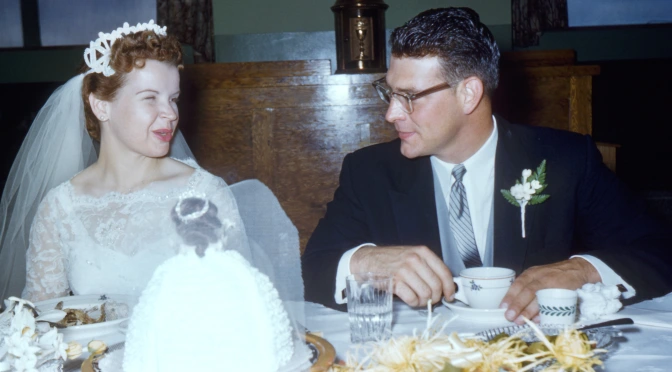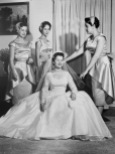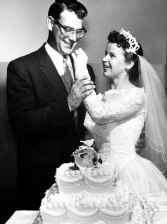Sometimes family history discoveries involve a careful eye, and sometimes a bit of dumb luck. Or, as in this case, a little of both. While searching for some city directory information on the web site of the Cudahy Family Library, I started watching a 36-minute film about life in that suburban Milwaukee County city. Titled “Life in Cudahy,” the film was made in 1938.
About six minutes into the presentation, I spotted a teenage face that looked really familiar. The young man was a mechanic working on a car at Koehler Service. In another shot, he stood in the background as a man and (presumably) his young daughter, look at their vehicle. This just had to be my mother’s older brother, Earl J. Mulqueen Jr. (1923-1980). The film was posted to the library’s YouTube channel. I formatted the excerpt below for wide screen and applied some color correction.


Station attendants wore pinstriped coveralls with Wadhams Oil Company black caps and ties or bowties. It was an era when service stations delivered actual service (with a smile) to every vehicle that came in for fuel: checking fluids and wiper blades and cleaning windows. Koehler’s also offered emergency service, as evidenced by the attendant who drove off on a motorcycle carrying a gasoline can in one hand. This was no doubt before the EPA and OSHA were around to clamp down on potential dangers.
Earl was the second-oldest of the 11 children of Earl J. Mulqueen and the former Margaret Madonna Dailey. The Mulqueen children were taught hard work, so it’s not surprising Earl had a job at age 14 or 15. Money was tight during the Great Depression, so any extra income was no doubt a valued help to the family. My mother, Mary Mulqueen, was 6 or 7 years old at the time the film was made. Earl was either a student at St. Frederick’s Catholic School in Cudahy or a freshman at Pio Nono High School in St. Francis.
Earl was brand new on the job the year the film was made. He worked as an automobile serviceman, according to his U.S. military file. He greased, lubricated and fueled automobiles, assisted with transmission and differential repairs and engine overhauls.

Just a few years after the film was made, Earl enlisted in the U.S. Marine Corps at the outset of World War II. He went on to fight with the 2nd Marine Division in some of the bloodiest battles of the war, including at Guadalcanal and Tarawa. He lost his left leg in May 1944 when a massive chain-reaction explosion at Pearl Harbor’s West Loch blew up dozens of ships and injured hundreds of sailors and Marines who were preparing for the Allied invasion of Saipan. Dozens were killed.

After returning from the Pacific, Earl spent his last months in the Marine Corps making promotional appearances at War Bond drives around Wisconsin. His accounts of the battles in the Pacific kept audiences spellbound and helped put a number of war-bond drives over the goal line.
After the war, Earl got married and went on to a long career in automotive repair. Once he had recovered enough to begin working, his parents purchased Koehler Service station for him and the name was changed to Earl’s Automotive. This not-so-little detail was shared by my aunt and Earl’s sister, Joan (Mulqueen) Haske. Earl ran the business until about 1960, when he moved his family to Colorado. After his wife Evelyn died of cancer in early 1963, Earl returned to Cudahy to again take up work in automotive service.
It is amazing to think his first job was documented by a film crew in 1938, only to be rediscovered in 2020, 40 years after his death.
©2020 The Hanneman Archive














































